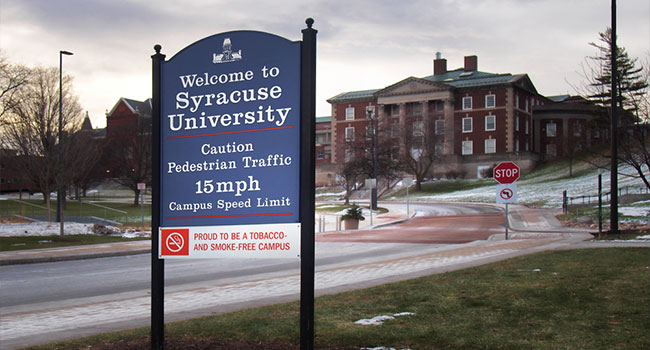
Syracuse University Expands Security, Introduces New Bias Reporting System in Wake of Racist Incidents
More security personnel are on campus after a series of racist incidents that authorities warn could continue in the form of copycat criminals.
- By Haley Samsel
- December 05, 2019
Following weeks of turmoil over racist and anti-Semitic incidents on campus, administrators at Syracuse University have increased the amount of security patrols and surveillance cameras on campus as students return for the final weeks of the semester.
Since Nov. 7, there have been at least a dozen instances of graffiti, racist targeting and other incidents that have been reported to Syracuse police, USA TODAY reported. Students held protests on campus demanding that the university adopt mandatory diversity training for staff and faculty and hire more counselors of color and other marginalized identities.
Administrators have indicated that there is a high risk of copycat incidents from people seeking to continue to stoke tensions on campus. Just last week, on Nov. 29, the university police department said it was investigating a “suspicious communication” directed toward a student organization that they later determined “posed no physical threat to the campus community.”
“In consultation with multiple law enforcement agencies, including Syracuse Police, the FBI and New York State Police, [the Department of Public Safety] anticipates we may experience more incidents of this nature,” Syracuse police wrote in a notice to the community. “DPS will continue to work closely with law enforcement to quickly assess and communicate factual, accurate and timely information.”
Only one arrest has been made throughout the tumultuous period on campus: an 18-year-old suspected of making graffiti in support of student protests. No arrests have been made regarding the racist incidents themselves.
Security on campus was already tight after a white supremacist memo was posted on a campus forum on Nov. 19. Ken Syverud, the university’s chancellor, said the incident was a hoax meant to scare students into believing violence could break out on campus.
Another aspect of the university’s response to threats is a new system for reporting bias incidents on its website, Syverud announced recently. The new system is aimed at speeding up the process for police to release details of the incidents within 48 hours of the original report.
“Our campus has experienced hateful acts in recent weeks,” Syverud said, according to USA TODAY. “The fear they have caused has been exacerbated by misinformation and unverified reports. The University must engage with our community in a more timely, effective and transparent manner.”
About the Author
Haley Samsel is an Associate Content Editor for the Infrastructure Solutions Group at 1105 Media.